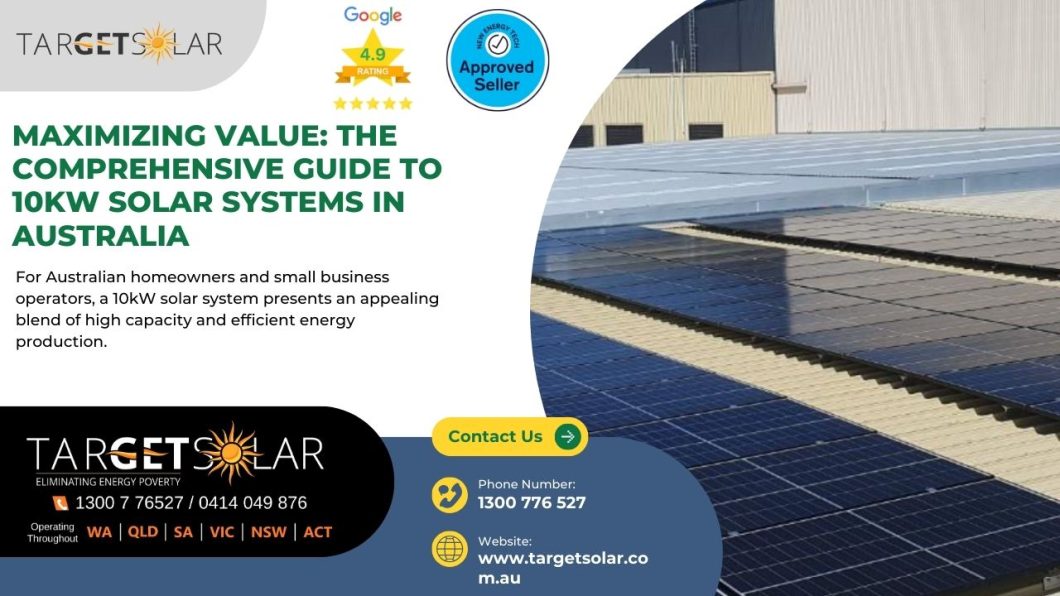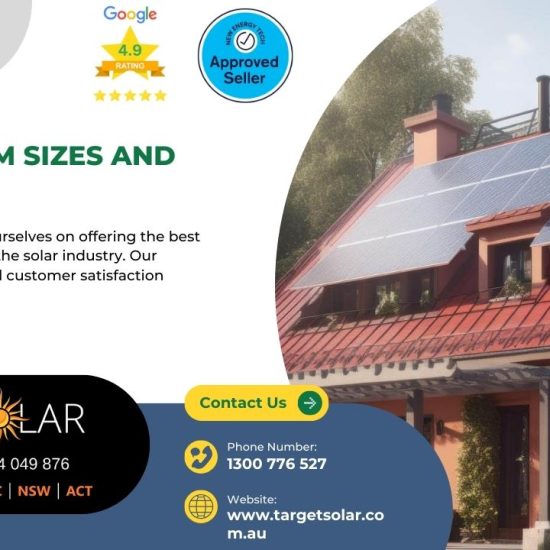Introduction: The Appeal of a 10kW Solar System
For Australian homeowners and small business operators, a 10kW solar system presents an appealing blend of high capacity and efficient energy production. This size is particularly suited to those with substantial daytime electricity usage or those looking to maximize their return on investment in renewable energy. This guide will delve into the costs, energy output, and expected payback periods of 10kW solar systems, providing you with the detailed insights needed to make an informed decision tailored to various locations across Australia.
Understanding the Costs
The cost of a 10kW solar system in Australia varies significantly depending on the state, available rebates, and the choice of technology. As of the latest data:
- Average Cost: Typically, the average price hovers around $0.96 per watt, translating to approximately $9,600 for a 10kW system. After considering federal STC rebates, the price can drop to about $10,390.
Cost Breakdown by Major City:
- Sydney, NSW: Approximately $7,950
- Melbourne, VIC: Around $8,540
- Brisbane, QLD: About $9,220
- Perth, WA: Near $9,760
- Adelaide, SA: Typically $8,530
- Canberra, ACT: Roughly $8,790
- Darwin, NT: Higher at $13,060 due to logistical costs
- Hobart, TAS: $11,420, impacted by geographic factors
Solar Output and Efficiency
A 10kW system consists of about 25-30 solar panels and requires roughly 80 square meters of roof space. The output efficiency depends on several factors including geographic location, panel orientation, and local weather conditions. On average, a system of this size can produce:
- Adelaide: 36 – 41 kWh per day
- Brisbane: 39 – 41 kWh per day
- Canberra: 36 – 41 kWh per day
- Darwin: 42 – 46 kWh per day
- Hobart: 29 – 33 kWh per day
- Melbourne: 31 – 36 kWh per day
- Perth: 40 – 44 kWh per day
- Sydney: 34 – 38 kWh per day
These outputs assume a north-facing array tilted at 30 degrees with about 75% system efficiency.
Payback Period and Financial Return
The payback period for a 10kW solar system varies by location and can range from 3 to 7 years, influenced by the rate of electricity consumption, local electricity prices, and solar feed-in tariffs. The internal rate of return for these systems can be quite favorable, especially with higher self-consumption rates. For example:
- Sydney: Payback in about 4.7 years with 30% self-consumption; 3.1 years with 60%.
- Melbourne: Approximately 6.8 years at 30% self-consumption; 4.4 years at 60%.
- Brisbane and Perth: More rapid paybacks due to higher average sunshine hours.
Is a 10kW System Right for You?
This system size is ideal for those consuming more than 40 kWh of electricity per day. It’s particularly effective for large households, home-based businesses, or small commercial establishments. The decision to install a 10kW system should be based on:
- Current and anticipated energy needs
- Roof space availability
- Financial readiness for an upfront investment
Conclusion
A 10kW solar system offers significant benefits for Australian residents looking to reduce their carbon footprint and utility bills. By understanding the specific factors that affect the cost, output, and payback of these systems, you can maximize the value of your investment, ensuring a sustainable and profitable energy solution tailored to your personal or business needs in Australia. As the landscape of solar technology and incentives continues to evolve, staying informed will help you make the best decisions for your energy future.
Interested in exploring how a 10kW solar system can benefit your home or business? Contact Target Solar today at 1300 776 527 or visit our website at www.targetsolar.com.au. Let us help you make the switch to solar with comprehensive support and expert advice tailored to your specific needs.
Contact Us Today:
- Phone: 1300 776 527
- Email: info@targetsolar.com.au
- Website: Visit Target Solar
Join thousands of Australians who are already enjoying the benefits of solar energy. Upgrade to solar today and start saving tomorrow!




